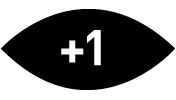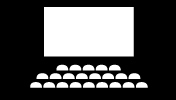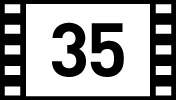

For someone like me, who considers film his religion, watching Drive on the biggest screen at my local cinema in the first week of its release was like being born again. A good friend told me he thought I'd like it, and I went to see it knowing nothing at all about it—the best way to experience any movie. I had long ago given up on ever again having the kind of summer-action-movie-experience I enjoyed several times a year as a kid growing up in the 1980s, but here it was, just like I remembered it.
Drive, in fact, has a distinctive 1980s feel, but infused with a specific modern sensibility. The film is cool yet riveting, stylish yet reserved, the kind of film David Fincher might make if he had a feminine side. It's the American début of Danish director Nicolas Winding Refn, who made the meandering British art-biopic Bronson in 2008 and the uneven Danish brutal-tone-poem Valhalla Rising in 2009. I wasn't prepared for his enthralling direction here. It is as if he were channelling Michael Mann’s visual flair, editorial style, and musical taste, but Drive is no knock-off or retro-retread. In fact, it is better and less self-consciously slick than anything Mann did in the '80s. (While I love Mann’s '80s output, I always get the feeling his movies are checking themselves out in every mirror they walk past.)
The quiet and exhilarating opening sequence of Drive segues into a single shot that wordlessly tells us everything we need to know about the main character. Quick, clean, clear exposition was something I thought American movies had forgotten how to do, but here it is. From that point on, the film unfolds with nothing but the pure, patient pleasure of cinema. Much of the story is told without dialogue, and when a chatty character does come along, like Albert Brooks in an excellent piece of against-type casting, it is sublimely written and acted.
In his wonderfully underplayed starring role as the anonymous Driver, Ryan Gosling reminded me of a very young Mickey Rourke in films like Angel Heart back in 1987, or his two quiet but unforgettable scenes in Lawrence Kasdan’s 1981 masterpiece, Body Heat. The first half of Drive is essentially a chaste love story; Gosling and Carry Mulligan are erotically effective at conveying their emotions through quiet glances and subtle gestures. But the second half of the film takes almost as severe a turn into violence and darkness as Jonathan Demme’s ground-breaking Something Wild from 1986—and those who have a low tolerance for cinematic bloodshed should be similarly warned: while the movie doesn't contain wall-to-wall gore, what’s there is pretty intense. Many have complained that the more graphic scenes in Drive took them out of the movie, but for me, the extreme moments of violence are perfect for a film that revels so much in cinematic aestheticism. After all, there are few things more visually powerful and pure than depictions of violence.






